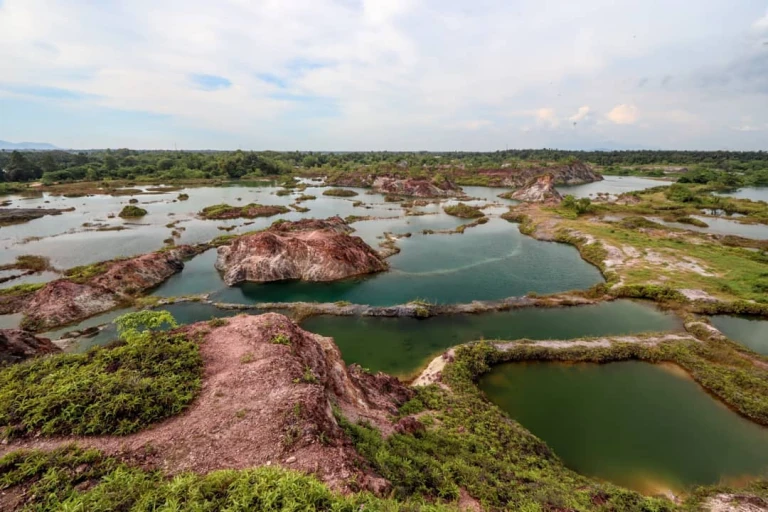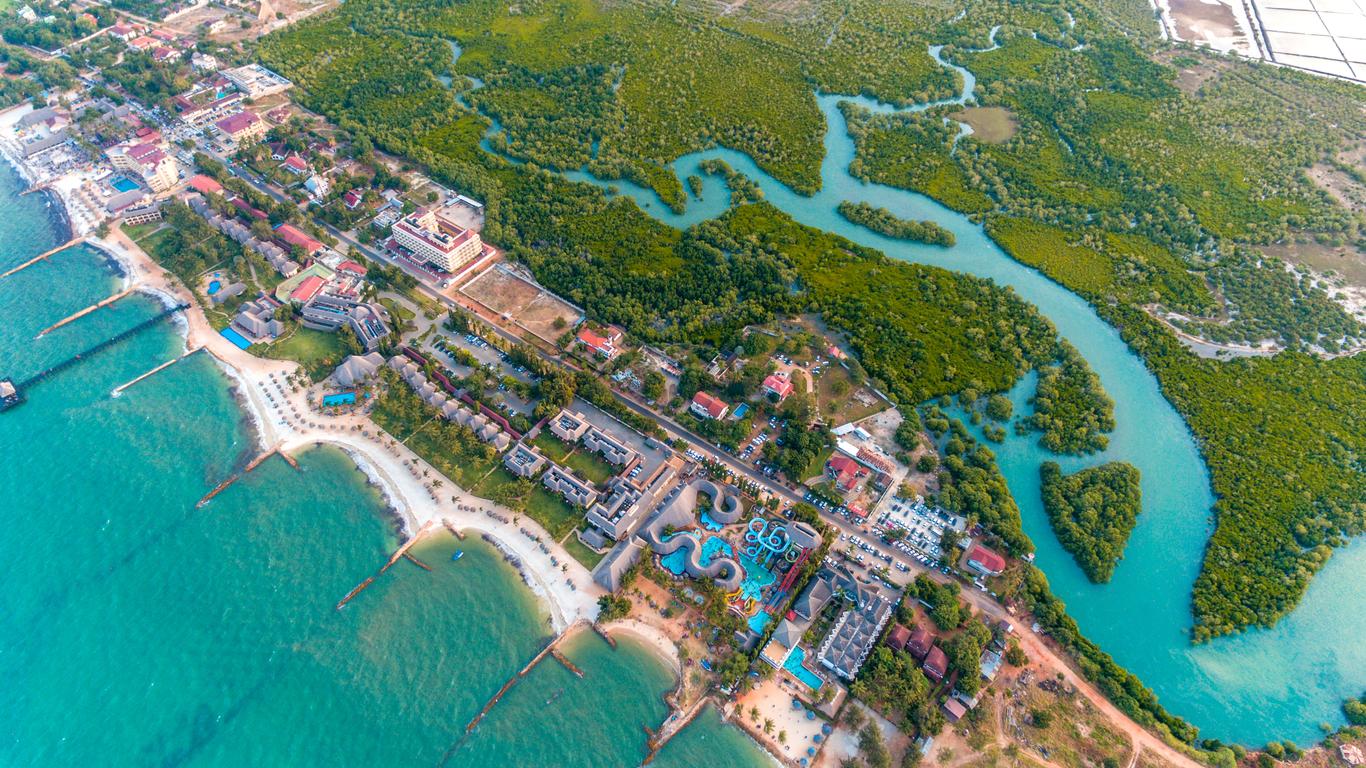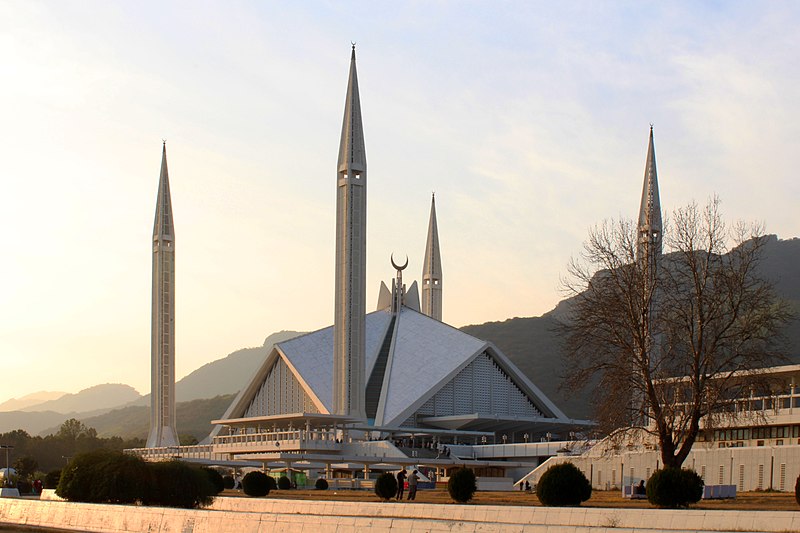Exploring the Enchanting Island of Penang: A Cultural and Historical Gem
Introduction: The Jewel of the Orient
Nestled along the northwestern coast of Malaysia, the island of Penang is a captivating blend of old-world charm and modern vibrancy. Often referred to as the "Pearl of the Orient," Penang has long been a melting pot of cultures that reflects its rich tapestry of history, heritage, and unique traditions. From its spice-scented streets to the harmonious clang of its trishaws, Penang offers an experience that is both exotic and familiar. In this article, we delve into the intricate layers that constitute Penang's compelling narrative, highlighting its significant past, cultural diversity, and the attractions that make it a must-visit destination.
A Tapestry Woven with History
Penang's history is an intricate mosaic influenced by centuries of cultural interchanges. Founded in 1786 by Captain Francis Light as a trade outpost for the British East India Company, Penang quickly became a bustling free port. Its strategic position attracted traders from China, India, the Middle East, and Europe, each leaving an indelible mark on the island's development.
Throughout its colonial era, Penang transformed into a flourishing entrepôt, serving as a crucial hub for the spice trade and Chinese immigration. Evidence of this thriving period is still very much alive in the island's architectural landscape. Stroll through George Town, the island's capital, and you'll encounter a living museum of well-preserved colonial buildings, each narrating stories of its bygone era. Recognized as a UNESCO World Heritage Site in 2008, George Town's unique architectural and cultural townscape is unparalleled in Asia.
During World War II, Penang experienced turbulent times under Japanese occupation. Post-war, the island witnessed a wave of nationalism that eventually led to the formation of Malaysia. Despite these upheavals, Penang has managed to retain its distinctive identity, evolving into a spirited confluence of the past and present.
Cultural Melange and Festivals
A cultural melting pot, Penang hosts a vibrant tapestry of traditions and festivals, a testament to its multicultural society comprising Malays, Chinese, Indians, and Eurasians. This harmonious coexistence is most vividly portrayed in the island’s festivals and celebrations. The Chinese New Year draws locals and tourists alike to the streets to witness elaborate dragon dances, resounding firecrackers, and lavish feasts.
Thaipusam, a Hindu festival of devotion, showcases another facet of Penang's cultural diversity. Thousands of devotees parade through the streets, showcasing their unwavering faith and resilience. The Chingay Parade, a unique Penang tradition, features acrobats and performers balancing massive flags, reflecting the community spirit and creative exuberance.
Indeed, Penang's cultural diversity extends into its culinary arts. Widely regarded as the street food capital of Malaysia, the island offers a gastronomic journey with dishes like char kway teow (stir-fried noodles), assam laksa (spicy noodle soup), and nasi kandar (rice served with an array of curries and side dishes). Each dish tells a story, replete with historic influences and generations of culinary heritage.
Natural Wonders and Urban Attractions
Beyond its historical and cultural allure, Penang is endowed with natural beauty and modern attractions that captivate visitors. The lush Penang Hill offers breathtaking panoramic views of the island and its surroundings. The cooler climate and well-maintained hiking trails make it a perfect retreat for nature enthusiasts.
Batu Ferringhi Beach, renowned for its golden sands and vibrant nightlife, is a haven for sun-seekers and adventure lovers. Water sports, beachfront dining, and lively night markets make it a dynamic locale for both relaxation and excitement.
Penang's urban attractions are equally compelling. The Penang Peranakan Mansion and the Khoo Kongsi clan house are architectural masterpieces that offer glimpses into the lavish lifestyles of the island’s past aristocracy. Art lovers will appreciate the streets of George Town, which have transformed into an open-air gallery with unique art installations and murals adorning its alleyways.
Concluding Thoughts: A Timeless Destination
Penang is more than just an island destination; it is a celebration of diversity, history, and vibrant culture. Whether you're wandering through the atmospheric streets of George Town, savoring local delicacies, or exploring the island's natural beauty, Penang offers an experience that lingers in memory long after the journey ends.
Stay tuned as we continue our exploration of Penang's many facets, offering deeper insights into what makes this island a truly enchanting destination. In the following installments, we'll delve further into hidden gems and off-the-beaten-path experiences that only add to the allure of this fascinating locale.
Unveiling Hidden Gems and Lesser-Known Treasures
While Penang boasts a plethora of well-known attractions, it is the hidden gems and lesser-known spots that often provide the most enchanting experiences. Tucked away from the bustling main streets are charming neighborhoods, serene landscapes, and cultural enclaves that hold secrets waiting to be discovered by adventurous travelers.
One such gem is the Penang National Park, a pristine natural reserve on the northwest corner of the island. This protected area is a haven for biodiversity, offering a series of hiking trails that lead you through dense jungles, mangrove forests, and secluded beaches. The canopy walk within the park provides a bird's-eye view of the lush surroundings, while the trek to Pantai Kerachut reveals the intriguing phenomenon of a meromictic lake, where layers of salt and fresh water do not mix. This hidden sanctuary offers respite from the hustle and bustle, allowing visitors to connect with the island's natural beauty.
Similarly, the historical district of Balik Pulau, often overlooked by tourists, offers a glimpse into rural life in Penang. Famous for its durian orchards, this region comes alive during the durian season, attracting locals and visitors with the distinctive aroma of the "king of fruits." A cycling tour through Balik Pulau unveils picturesque landscapes of verdant paddy fields, traditional kampong houses, and the warm hospitality of the locals.
Cultural and Artistic Flourishes
Penang's art scene is as vibrant as its culinary offerings, with George Town serving as the epicenter of this creative explosion. The Penang International Street Art Festival has transformed the city into a dynamic canvas, where local and international artists have left their mark in striking murals and installations. A leisurely walk down Armenian Street reveals intricate wall art depicting snippets of local life, folklore, and contemporary themes, each piece telling a compelling story.
For those interested in the performing arts, the annual George Town Festival is a cultural extravaganza celebrating music, theatre, dance, and visual arts. This month-long event attracts creatives from all over the world, turning the city into a vibrant showcase of talent and heritage. Interactive workshops, performances, and exhibitions invite participation and foster a deeper appreciation of the arts within the community and beyond.
The Penang House of Music, located in the KOMTAR Tower, is another cultural treasure that encapsulates the island's musical heritage. This interactive museum celebrates Penang’s rich musical tapestry, tracing influences from various ethnic communities that have contributed to the soundscape of the region. Visitors can explore exhibits showcasing traditional instruments, recordings of vintage music, and stories of influential local musicians who have shaped Penang's musical identity.
The Spiritual Heartbeat of Penang
Penang is rich not only in its cultural and natural offerings but also in its spiritual heritage, with a diversity of religious sites scattered across the island. The Kek Lok Si Temple, one of the largest Buddhist temples in Southeast Asia, is a majestic complex perched on a hill in Air Itam. It is a pilgrimage site known for its striking architectural blend of Chinese, Thai, and Burmese influences. The temple complex is adorned with intricately carved statues, vibrant murals, and a towering bronze statue of the Goddess of Mercy, Kuan Yin.
Similarly, the Kapitan Keling Mosque, a historic mosque built by Indian-Muslim merchants in the early 19th century, is a beacon of Penang's multicultural harmony. Its elegant domed structure and minarets accentuate the city’s skyline, offering a serene space for reflection. The mosque welcomes visitors to learn about Islamic traditions and appreciate the beauty of its architecture.
A walk through George Town also reveals numerous small Hindu temples and Chinese clan houses that dot the cityscape. These places of worship not only embody the spiritual essence of Penang but also narrate stories of migration, settlement, and community life over the centuries.
Conclusion: Embracing Penang's Multilayered Essence
Penang is an island where history, culture, and nature converge to create an atmosphere that is both invigorating and steeped in tradition. Beyond its famous landmarks lies a world of hidden wonders that invite visitors to explore further and immerse themselves in the island’s diverse offerings. From the tranquil trails of its national parks to the bustling streets adorned with art, and from its culinary delights to its spiritual sanctuaries, Penang is a destination that constantly reveals new and captivating layers.
As you continue to journey through the hidden corners and cherished traditions of Penang in the next segment, you'll discover even more about what makes this island a truly unique and timeless experience. Stay tuned as we delve deeper into Penang's untold stories and uncover the profound warmth and resilience of its people, past, and present.
Stories of Penang: Unraveling the Tapestry of Untold Narratives
Penang is more than a mere geographical entity; it is a repository of stories waiting to be unearthed and shared. These stories emanate from the vibrant communities and individuals who have called this island home across generations, each contributing to its rich cultural mosaic. As we venture deeper into the lesser-known narratives of Penang, we encounter a world that reflects a history of resilience, adaptation, and vibrant cultural exchange.
One of the stories etched into Penang's cultural memory is that of the Baba-Nyonya, or Peranakan Chinese community. This unique ethnic group emerged from the intermarriages between Chinese immigrants and local Malays. The Baba-Nyonya are known for their distinct culture, which blends Chinese and Malay customs, resulting in a rich culinary heritage and vibrant traditions. Their homes, adorned with distinctively colorful tiles and wooden carvings, are architectural marvels that speak volumes about their social standing and artistry.
A visit to the Pinang Peranakan Mansion offers insight into the opulent lifestyle of the Baba-Nyonya elite. This carefully restored museum displays exquisite antiquities, jewelry, and artifacts, all quintessentially Peranakan. The mansion encapsulates stories of prosperity, social changes, and the bridging of cultural divides in an era defined by trade and diversity.
The Culinary Chronicles: A Gastronomic Tapestry
Penang is synonymous with culinary excellence, a title it wears with pride. The island is a gastronomic utopia, where flavors dance on the palate, each dish offering a taste of history and multicultural fusion. This love affair with food has roots deep in Penang’s rich cultural interactions and innovations that have occurred over generations. Traditional hawker stalls, bustling night markets, and charming cafés offer tastes that capture the essence of Penang’s culinary diversity.
The Penang Assam Laksa is a quintessential dish that embodies the island's rich culinary heritage. Recognized worldwide, this tangy and spicy fish-based noodle soup is a medley of textures, dominated by ingredients such as mackerel, tamarind, and the profusion of aromatic herbs that garnish it. Each bowl reflects the influences of Malay, Chinese, and Siamese culinary practices, culminating in a dish that is as complex as Penang's own tapestry.
Another culinary marvel is Char Kway Teow, a smoky noodle dish perfecting the art of wok hei, or “breath of the wok.” This dish is a brilliant concoction of flat rice noodles, prawns, Chinese sausage, and cockles, all stir-fried in a fiery blaze that infuses it with its signature charred aroma. The complexity and interplay of flavors in each mouthful tell a story of culinary innovation and the shared love for food.
Beyond street food, Penang also offers a burgeoning café culture where Western and traditional flavors meet. These coffeehouses often become cultural hubs where locals and travelers converge to indulge in local brews, Western-style delights, and the perennial favorite — kopi, a Malaysian-style coffee.
Modern Innovations and Forward-Looking Perspectives
While Penang draws strength from its past, it is equally forward-looking, embracing change and innovation with open arms. The island is burgeoning as an industrial and technological hub, attracting young talents and multinational corporations that foresee its potential as a center for innovation and creative enterprise. Its transformation into a Silicon Valley of the East is indicative of its adaptability and resilience in an ever-evolving global landscape.
Moreover, Penang's government and communities have taken steps to ensure sustainable growth, prioritizing green initiatives and urban development that preserve cultural heritage. George Town's exemplary UNESCO heritage status is a testament to the island's commitment to safeguarding its charm while adapting to modern exigencies.
The emphasis on education and research continues to play a critical role in developing Penang’s human capital. Institutions such as Universiti Sains Malaysia have become hotbeds for academic pursuits and interdisciplinary research, fostering a culture of ingenuity and intellectual growth among the local population.
Conclusion: A Living Legacy
In its rich tapestry of life, Penang serves as a testament to the power of cultural fusion and resilience. Its rich heritage, diversity, innovation, and tradition have crafted an island that thrives as a living testament to the enduring spirit of its people. From historical landmarks to vibrant street art, Penang offers an exceptional experience that promises to ignite curiosity and leave visitors with lasting memories.
As we conclude this exploration into Penang's multifaceted essence, it becomes clear that the island’s greatest allure is its embrace of both past and future. Drawing strength from its cultural bedrock while confidently stepping forward into the modern age, Penang is an enticing destination that continues to captivate the hearts and minds of all who venture within its shores. Whether you visit for the history, the food, or the proclivity for artistic expression, Penang offers an invitation to explore, connect, and enrich your worldview in the heart of Southeast Asia.















Comments